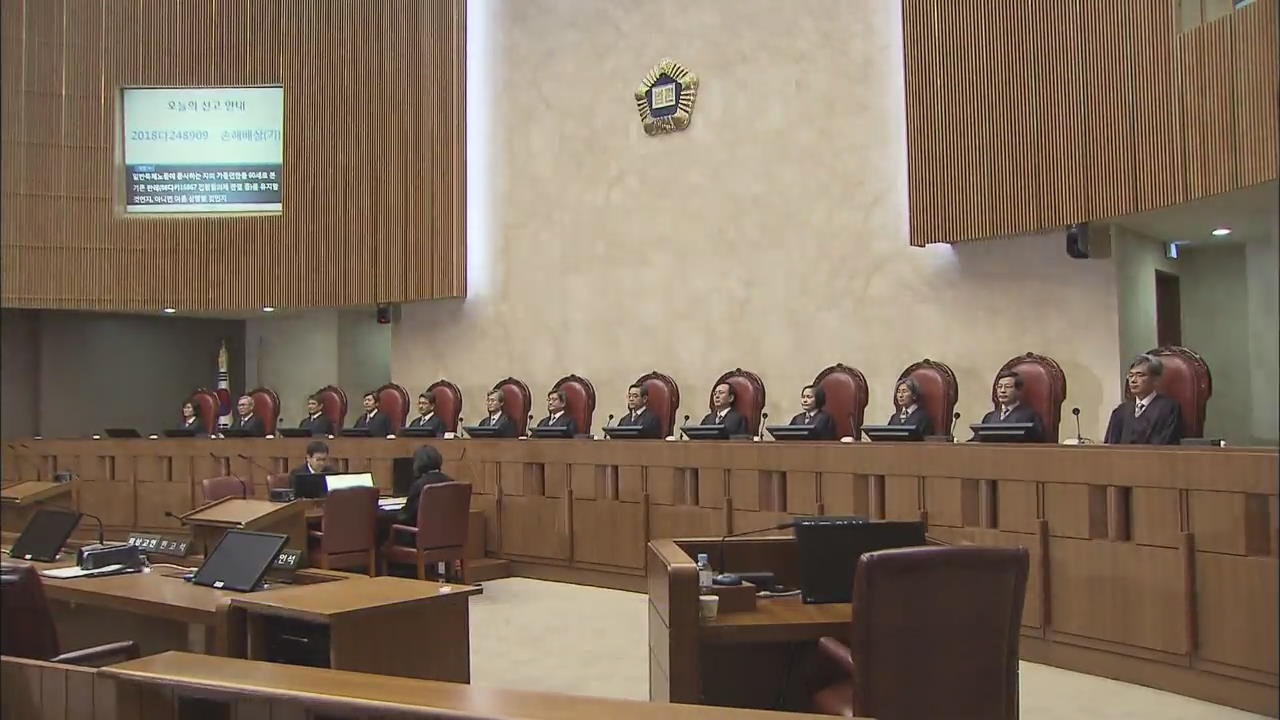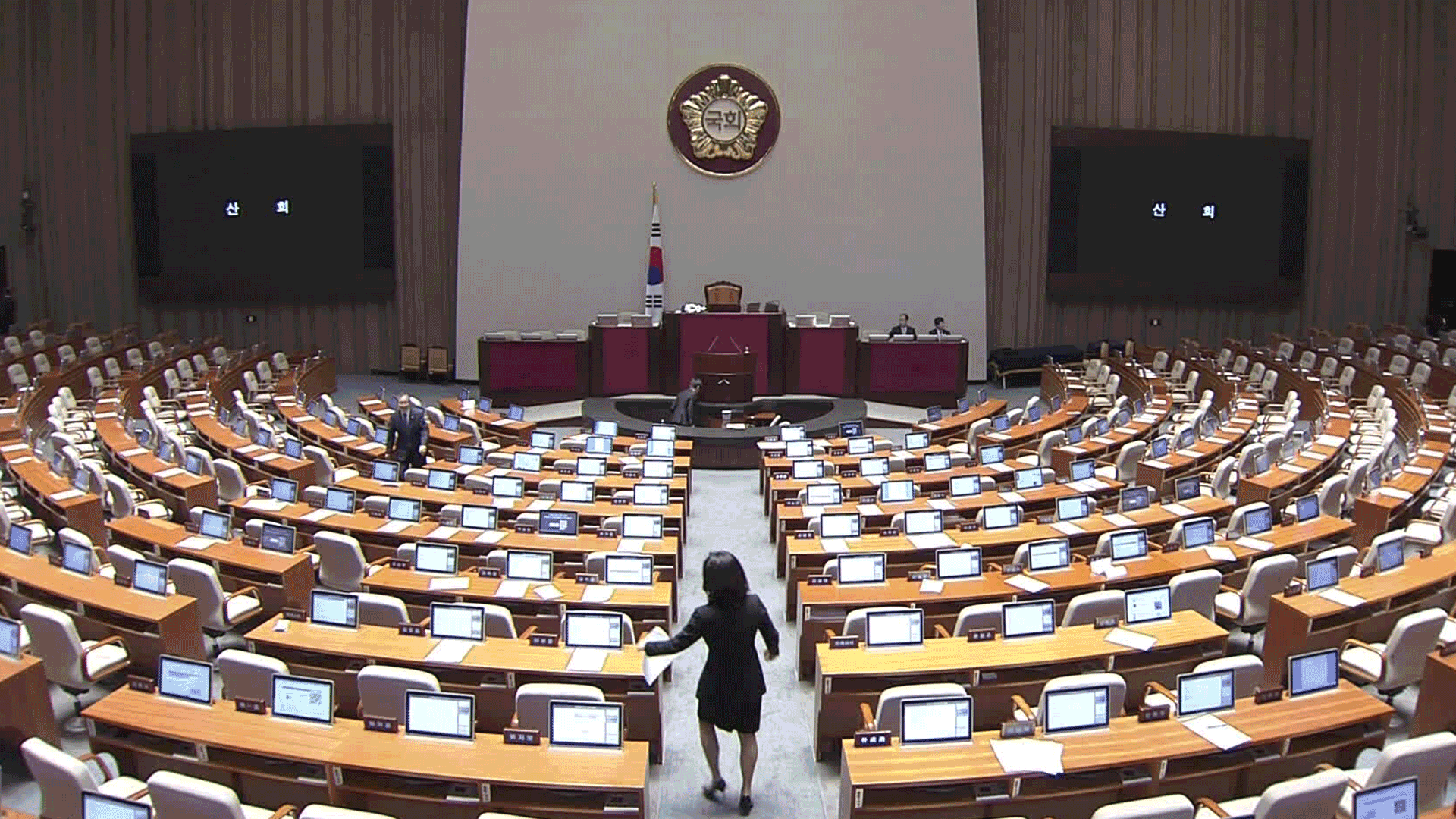Maximum Working Age
입력 2019.02.22 (15:34)
수정 2019.02.22 (16:00)
읽어주기 기능은 크롬기반의
브라우저에서만 사용하실 수 있습니다.
[Anchor Lead]
The Supreme Court of Korea has ruled that 65 should now be the maximum age that a person can earn wages with physical labor. This is the first revision in 30 years to the existing limit which has been set at 60 years old.
[Pkg]
The Supreme Court of Korea has raised the maximum age that urban manual laborers can work for wages from 60 to 65. The existing age limit of 60 was changed for the first time in 30 years.
[Soundbite] Kim Myeong-su(Supreme Court Chief Justice) : "The majority of Supreme Court justices agreed that, based on experience, a person can work until he or she is 65 years old unless there are special circumstances."
This ruling came at the Supreme Court's damage compensation trial for a four-year-old boy who had died at a swimming pool in 2015. The boy's family had filed a suit against the operators of the swimming pool. According to precedents, minors like the deceased boy or the unemployed are classified as urban daily laborers, whose working age limit once stood at 60. But the Supreme Court justices determined that the age limit should be raised to 65, given improved living conditions and socioeconomic changes. Physical labor age limit provides the basis for calculating damage compensation. So when the age limit is raised, compensations in various damage lawsuits are, in turn, expected to go up as well. If, for example, an office worker, whose mandatory retirement age is 60, could no longer work because of an accident that had happened when he was 50 he would've been compensated for damages based on the wages he would have received until his retirement. But from now on, he would be able to receive five extra years of an urban daily laborer's average wage as damage compensation. The court concluded that an average person can take on physical labor until 65 years of age. Insurance premiums are expected to increase as the higher working age limit is likely to raise damage compensation amounts. The insurance industry claims that the annual insurance payout amount would go up by some 120 billion won and car insurance premiums may be increased as much as 1.2%. The latest change is likely to spark social debates about extending the statutory minimum retirement age and raising the age when a person is legally defined as an elderly.
The Supreme Court of Korea has ruled that 65 should now be the maximum age that a person can earn wages with physical labor. This is the first revision in 30 years to the existing limit which has been set at 60 years old.
[Pkg]
The Supreme Court of Korea has raised the maximum age that urban manual laborers can work for wages from 60 to 65. The existing age limit of 60 was changed for the first time in 30 years.
[Soundbite] Kim Myeong-su(Supreme Court Chief Justice) : "The majority of Supreme Court justices agreed that, based on experience, a person can work until he or she is 65 years old unless there are special circumstances."
This ruling came at the Supreme Court's damage compensation trial for a four-year-old boy who had died at a swimming pool in 2015. The boy's family had filed a suit against the operators of the swimming pool. According to precedents, minors like the deceased boy or the unemployed are classified as urban daily laborers, whose working age limit once stood at 60. But the Supreme Court justices determined that the age limit should be raised to 65, given improved living conditions and socioeconomic changes. Physical labor age limit provides the basis for calculating damage compensation. So when the age limit is raised, compensations in various damage lawsuits are, in turn, expected to go up as well. If, for example, an office worker, whose mandatory retirement age is 60, could no longer work because of an accident that had happened when he was 50 he would've been compensated for damages based on the wages he would have received until his retirement. But from now on, he would be able to receive five extra years of an urban daily laborer's average wage as damage compensation. The court concluded that an average person can take on physical labor until 65 years of age. Insurance premiums are expected to increase as the higher working age limit is likely to raise damage compensation amounts. The insurance industry claims that the annual insurance payout amount would go up by some 120 billion won and car insurance premiums may be increased as much as 1.2%. The latest change is likely to spark social debates about extending the statutory minimum retirement age and raising the age when a person is legally defined as an elderly.
■ 제보하기
▷ 카카오톡 : 'KBS제보' 검색, 채널 추가
▷ 전화 : 02-781-1234, 4444
▷ 이메일 : kbs1234@kbs.co.kr
▷ 유튜브, 네이버, 카카오에서도 KBS뉴스를 구독해주세요!
- Maximum Working Age
-
- 입력 2019-02-22 15:45:14
- 수정2019-02-22 16:00:31

[Anchor Lead]
The Supreme Court of Korea has ruled that 65 should now be the maximum age that a person can earn wages with physical labor. This is the first revision in 30 years to the existing limit which has been set at 60 years old.
[Pkg]
The Supreme Court of Korea has raised the maximum age that urban manual laborers can work for wages from 60 to 65. The existing age limit of 60 was changed for the first time in 30 years.
[Soundbite] Kim Myeong-su(Supreme Court Chief Justice) : "The majority of Supreme Court justices agreed that, based on experience, a person can work until he or she is 65 years old unless there are special circumstances."
This ruling came at the Supreme Court's damage compensation trial for a four-year-old boy who had died at a swimming pool in 2015. The boy's family had filed a suit against the operators of the swimming pool. According to precedents, minors like the deceased boy or the unemployed are classified as urban daily laborers, whose working age limit once stood at 60. But the Supreme Court justices determined that the age limit should be raised to 65, given improved living conditions and socioeconomic changes. Physical labor age limit provides the basis for calculating damage compensation. So when the age limit is raised, compensations in various damage lawsuits are, in turn, expected to go up as well. If, for example, an office worker, whose mandatory retirement age is 60, could no longer work because of an accident that had happened when he was 50 he would've been compensated for damages based on the wages he would have received until his retirement. But from now on, he would be able to receive five extra years of an urban daily laborer's average wage as damage compensation. The court concluded that an average person can take on physical labor until 65 years of age. Insurance premiums are expected to increase as the higher working age limit is likely to raise damage compensation amounts. The insurance industry claims that the annual insurance payout amount would go up by some 120 billion won and car insurance premiums may be increased as much as 1.2%. The latest change is likely to spark social debates about extending the statutory minimum retirement age and raising the age when a person is legally defined as an elderly.
The Supreme Court of Korea has ruled that 65 should now be the maximum age that a person can earn wages with physical labor. This is the first revision in 30 years to the existing limit which has been set at 60 years old.
[Pkg]
The Supreme Court of Korea has raised the maximum age that urban manual laborers can work for wages from 60 to 65. The existing age limit of 60 was changed for the first time in 30 years.
[Soundbite] Kim Myeong-su(Supreme Court Chief Justice) : "The majority of Supreme Court justices agreed that, based on experience, a person can work until he or she is 65 years old unless there are special circumstances."
This ruling came at the Supreme Court's damage compensation trial for a four-year-old boy who had died at a swimming pool in 2015. The boy's family had filed a suit against the operators of the swimming pool. According to precedents, minors like the deceased boy or the unemployed are classified as urban daily laborers, whose working age limit once stood at 60. But the Supreme Court justices determined that the age limit should be raised to 65, given improved living conditions and socioeconomic changes. Physical labor age limit provides the basis for calculating damage compensation. So when the age limit is raised, compensations in various damage lawsuits are, in turn, expected to go up as well. If, for example, an office worker, whose mandatory retirement age is 60, could no longer work because of an accident that had happened when he was 50 he would've been compensated for damages based on the wages he would have received until his retirement. But from now on, he would be able to receive five extra years of an urban daily laborer's average wage as damage compensation. The court concluded that an average person can take on physical labor until 65 years of age. Insurance premiums are expected to increase as the higher working age limit is likely to raise damage compensation amounts. The insurance industry claims that the annual insurance payout amount would go up by some 120 billion won and car insurance premiums may be increased as much as 1.2%. The latest change is likely to spark social debates about extending the statutory minimum retirement age and raising the age when a person is legally defined as an elderly.
이 기사가 좋으셨다면
-
좋아요
0
-
응원해요
0
-
후속 원해요
0

















이 기사에 대한 의견을 남겨주세요.